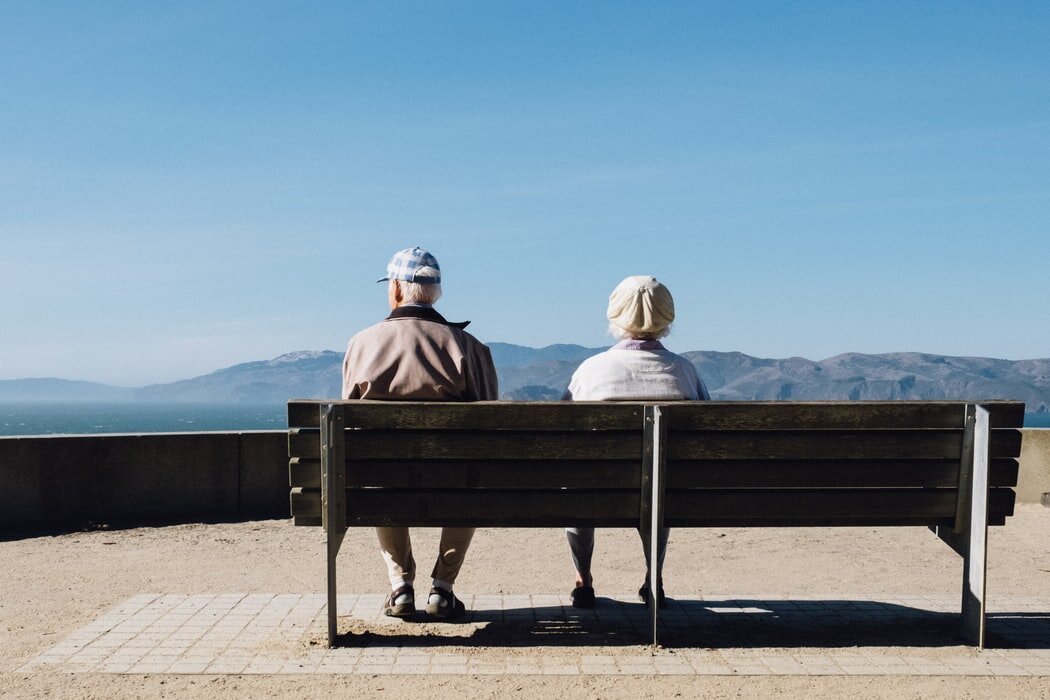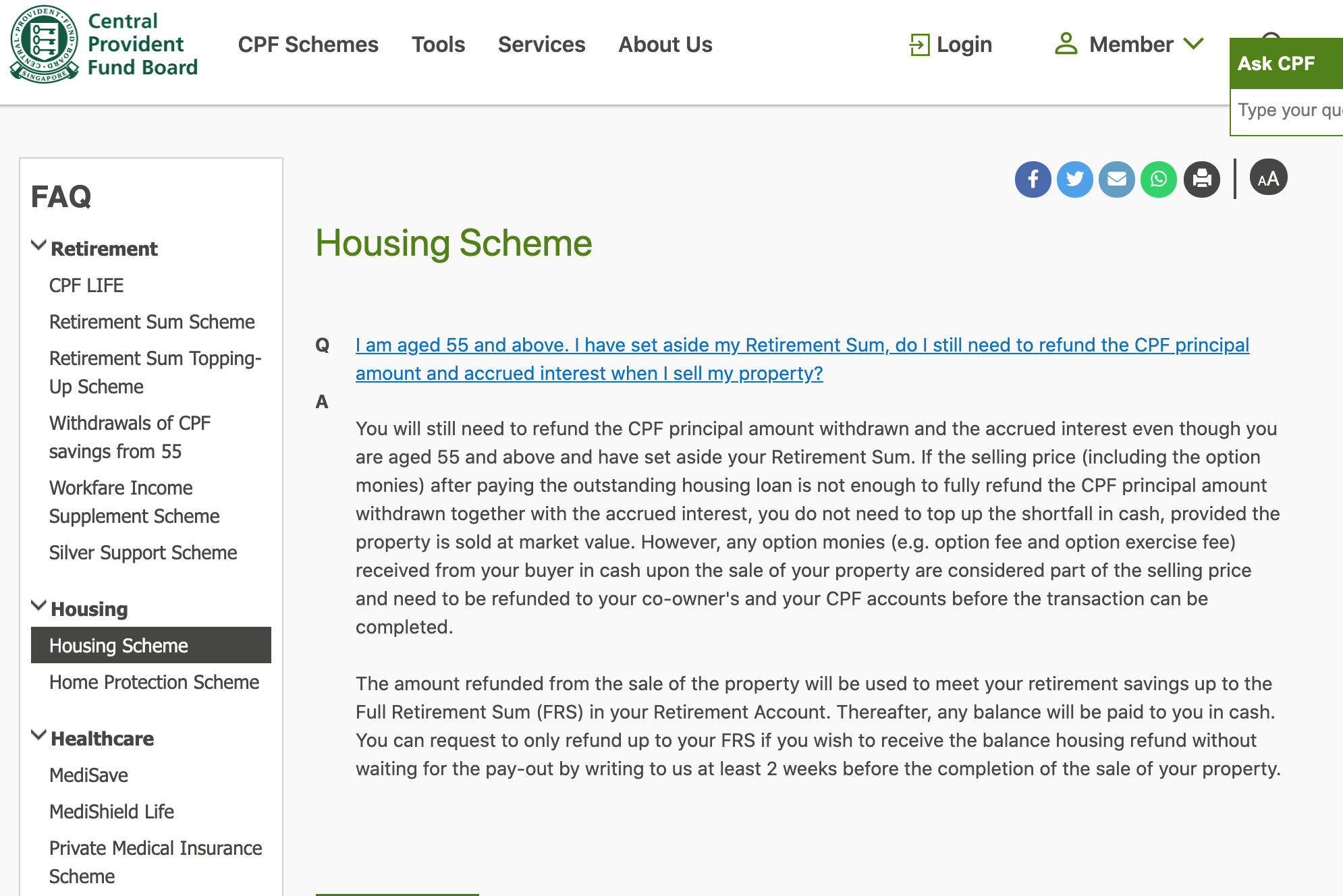
Can you embark on an investment journey if you’re 55 years old and still staying in an HDB flat? What are your immediate concerns when you turn 55?
Most likely you are thinking about retirement, as well as your mortgage repayments, depleting CPF OA, and the lack of cash funds.
What happens when you turn 55 years old?
Every Singapore Citizen would have a CPF Retirement Account(RA) created by the CPF board automatically which is made up of the funds in your CPF Special Account(SA) and Ordinary Account(OA). For those turning 55 this year in 2020, the Full Retirement Sum (FRS) that is required of them is actually $181,000. Every year it’s incremental of 5000 as at this point of writing. So, if you do not have sufficient OA and SA in your existing account to make up this full amount, when you sell your house.
You will need to refund the CPF principal amount withdrawn and the accrued interest even though you are aged 55 and above and have set aside your Retirement Sum(Minimum Retirement Sum, MRS).
The refunds from the sale of your earlier property will be used to top up your Retirement Account (RA), up to your Full Retirement Sum. After this, any balance housing refunds will be paid to you in cash within one week after the CPF refunds are paid into your CPF account.
Alternatively, you can request (at least 2 weeks before the completion of the sale of your property) for the balance housing refunds to remain in your OA to pay for the next property or redeem another housing loan.
What are your options then, if you do not have enough CPF funds? There are various ways to actually increase your cash payout or top up your RA to the FRS. One of it is actually to right-size from a bigger HDB to a smaller HDB flat. The other option is actually to divest one property if you’re a multiple properties owner, or rent out a room or the whole unit, and perhaps stay with your children, if that’s a viable option. The other option would be actually to consider Lease Buyback Scheme from HDB, but this has eligibility condition, which is you need to be over 65 years old and above.
Case Study
For the purposes of discussion, we will talk about right-sizing from a bigger HDB to a smaller HDB flat.
For this particular case, this mature property owner owns one property, joint ownership, turning 55 years old end of 2019. Husband and wife have been working, but the wife plans to retire when she turns 55. Husband and wife existing OA and SA are sufficient to meet the full retirement sum of $176,000 which we saw earlier. They have two children who are 28 years old and 30 years old, single working professionals, and no financial commitments. Their current existing property is an HDB Executive Apartment, which they have actually been staying for 20 over years and have fully paid for it.
What are their thoughts at this point?
They’re thinking if this is possible for them. However, they do not want to be burdened by a mortgage. Their property will eventually be inherited by their children when they pass on. So they want to live a simple burden-free lifestyle in that sense.
After looking at their property, and assuming the value of the house at about 640K for the HDB EA,and working out some calculations, The couple after returning the CPF principal amount and the accrued interest, adds up to about $650K.

https://www.cpf.gov.sg/Members/Schemes/schemes/housing#
What can they do to sell at market value? That would be ideal. If they were to sell at market value, at 640K – although incurring a negative sale of $10,000. It’s not something that they would need to return as long as the property was sold at Market Value or above. Let’s assume the unit was sold at $640k.
Why did they want to liquidate 640K? They wanted to minimise loss, future CPF loss. if they were to sell it today, they will actually lose out about close to 10K. But if they were to do it later, five years down the road or ten years down the road, it might be even more due to depreciation and declining HDB prices over the past 5-6 years and the compounding Accrued Interest of CPF.
What can they do? They decided to right-size the house and buy a smaller HDB, three or four-room flat, with a lesser remaining lease, or buy at districts whereby the houses are of a lower price quantum. So how can they actually fund for their retirement home? They can use partial cash if they have existing cash savings, as well as up to 50% of the FRS from the RA, because they have already met the full retirement sum. So, with that, they’ve actually made the full payment on the next house. They do not have to worry about monthly mortgage payment anymore.
In addition to that, another possibility is they can also actually choose to keep the remaining amount in their RA, to earn a higher interest rate.
Or they can choose to start their single children on an investment property portfolio. How do they do this? They actually take a partial amount from the 640K to cover the shortfall. Just a simple calculation here. The two children, 28 years old and 30 years old, one of them is earning 7000 the other $5000. So in short, the total CPF OA money contribution for the two of them is about 2430, and the CPF accumulation is about $154460 after working a number of years. So this is a simplified calculation without any 2.5% compounding interest.
What can they do? They actually went ahead to see a property which is about $1 million, and they realised that this is something that is possible. So, let’s say they were to buy a $1 million property, the loan to value amount that you get from the bank is only 75%, so that means you can only get about 750K. 5% would be the cash down-payment, and 20% is 200K which can be a combination of CPF and cash. So right now the cash and the CPF outlay is about $274,000, but together they have about $154,000, so the parents just have to top up 120K in cash to get them started on this investment journey (either with their own savings or from the CPF funds withdrawn in excess of their FRS). So with that, the monthly instalment for this particular $1 million property is about $2900 and their OA monthly contribution is about 2530. So they need to top-up about $433, which is still manageable and reasonable.
There’re different variations here, let’s take a very simple scenario, whereby they actually fully use their OA, and they need to consider a monthly top-up of $433 among the two persons. So at the end of it, what are the benefits of this? The parents have a new home, HDB smaller unit, fully paid, and parents do not have to worry about mortgage anymore.
What do the children have in the end? They have an investment property together, they bought a new launch. And then, one of the benefits is a progressive payment, meaning that they have reasonable mortgage repayment, and they can sell once the SSD period is over, even before it TOPs, or they can hold out longer to earn the rental income.
But for this scenario, you need to have some key considerations here. You have to ensure that your children have no plans to purchase an HDB as a matrimonial home in the next three years. Why? Because it’d be affected by grants, eligibility, et cetera. The children as well must be willing to embark on this disciplined savings plan as compared to others like bank savings or insurance endowment type of plans. So definitely, this is something that parents who are turning 55 and they have fully paid their property, they can consider this option if their OA and SA have already met the FRS, or even the basic retirement sum.
We are happy to address your questions if any.
See you.








